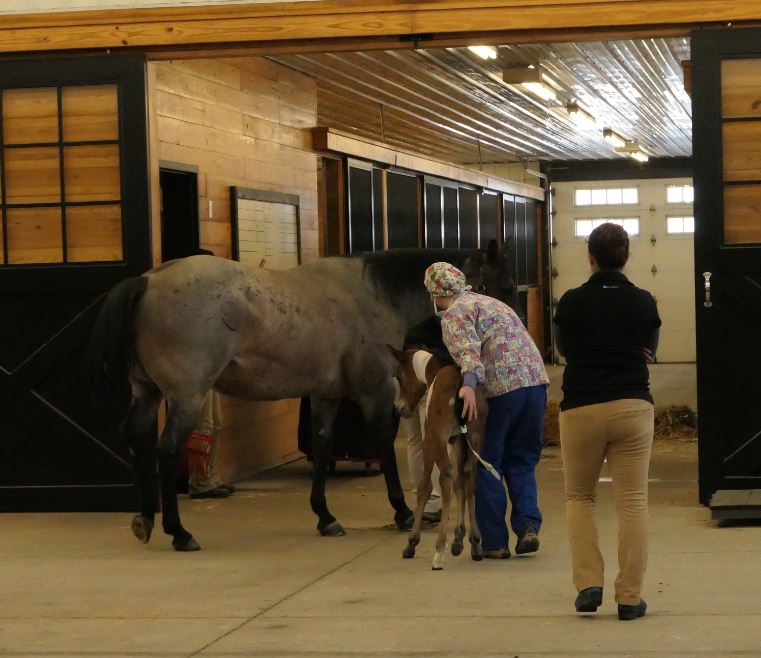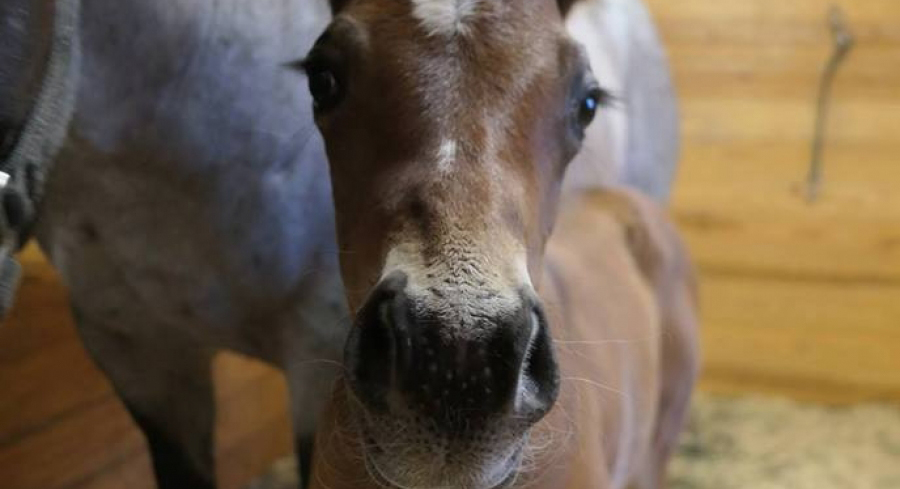What’s your diagnosis?
A 3 day old (72 hours), QH filly presented to SVEC for mild lethargy and an elevated heart rate (180bpm). Foaling was attended and uneventful, filly stood, nursed normally and passed a normal amount of meconium. She was examined by a veterinarian at 24 hours of age and given IV Plasma to prevent sepsis. At 48 hours old, she was found to be mildly lethargic with a consistently high heart rate (>160 bpm).
What is your diagnosis and next steps/treatments?
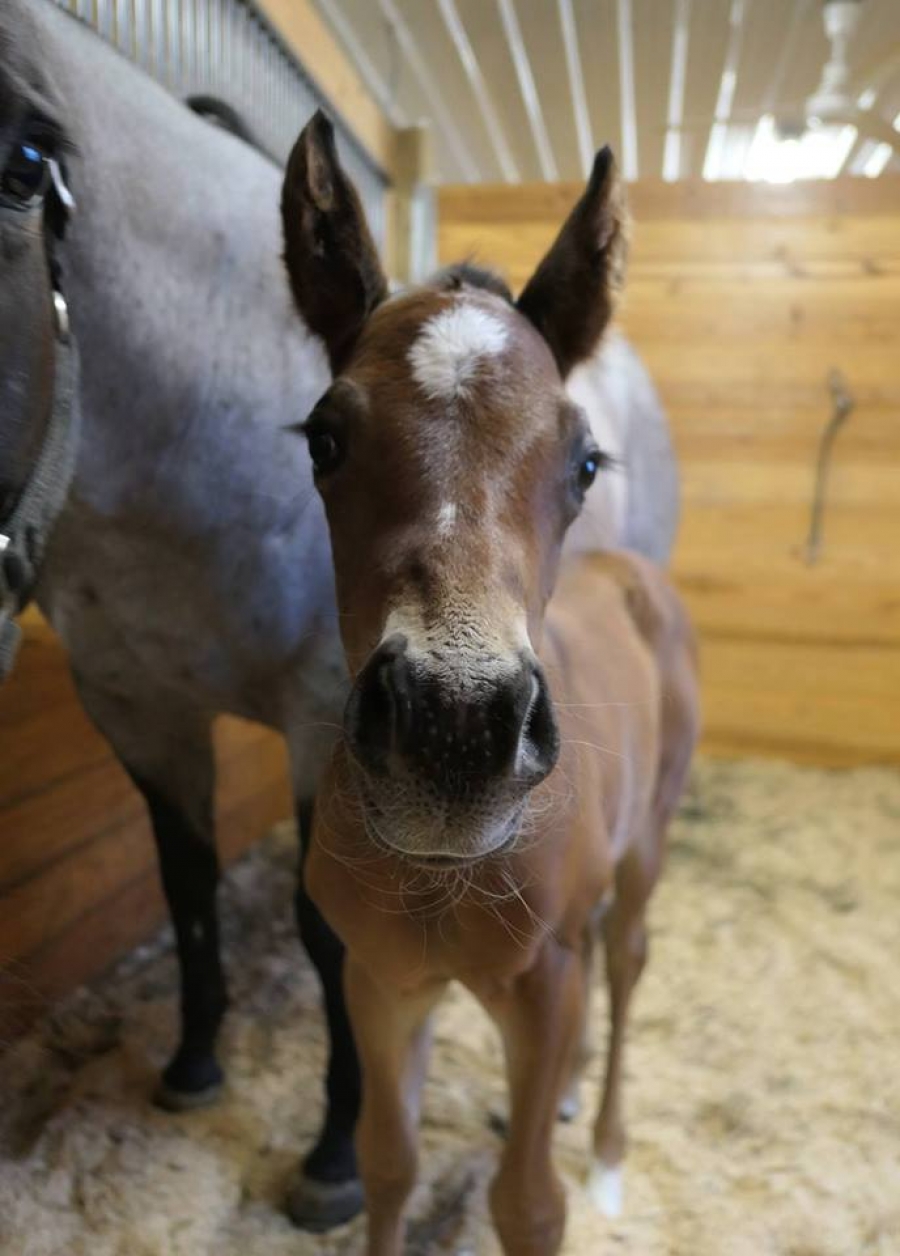

The Saginaw Valley Equine Answer
Upon physical examination, the filly seemed bright and alert, but her heart rate was still high. She was nursing and did lay around more than normal. She was kept for observation. Later in the day she was examined again and the mare’s bag was still full. The filly hadn’t been nursing much throughout the day.
Blood work revealed a low white blood cell count, elevated creatine, potassium and lactate levels.
Ultrasound findings revealed a rupture in the ventral aspect of her bladder.
A IV catheter was placed and she was given Sodium Chloride with Dextrose to help with her metabolic imbalance. She was also started on IV antibiotics and anti-inflammatory therapy. She was sedated and her abdomen was clipped and prepped in a sterile manner. Urine that was pooled in her abdomen, approximately 1.5-2 gallons, was drained off using a teat canula.
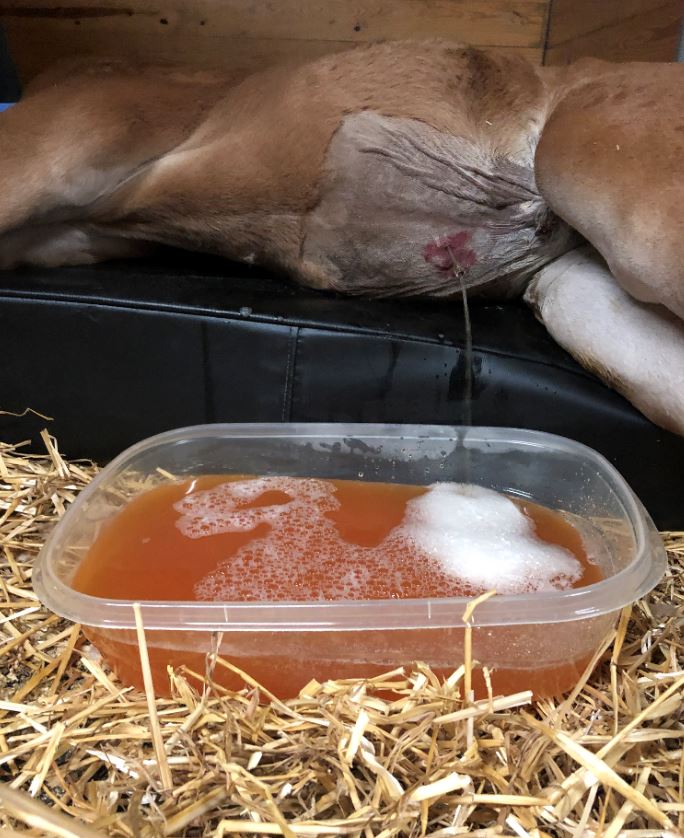
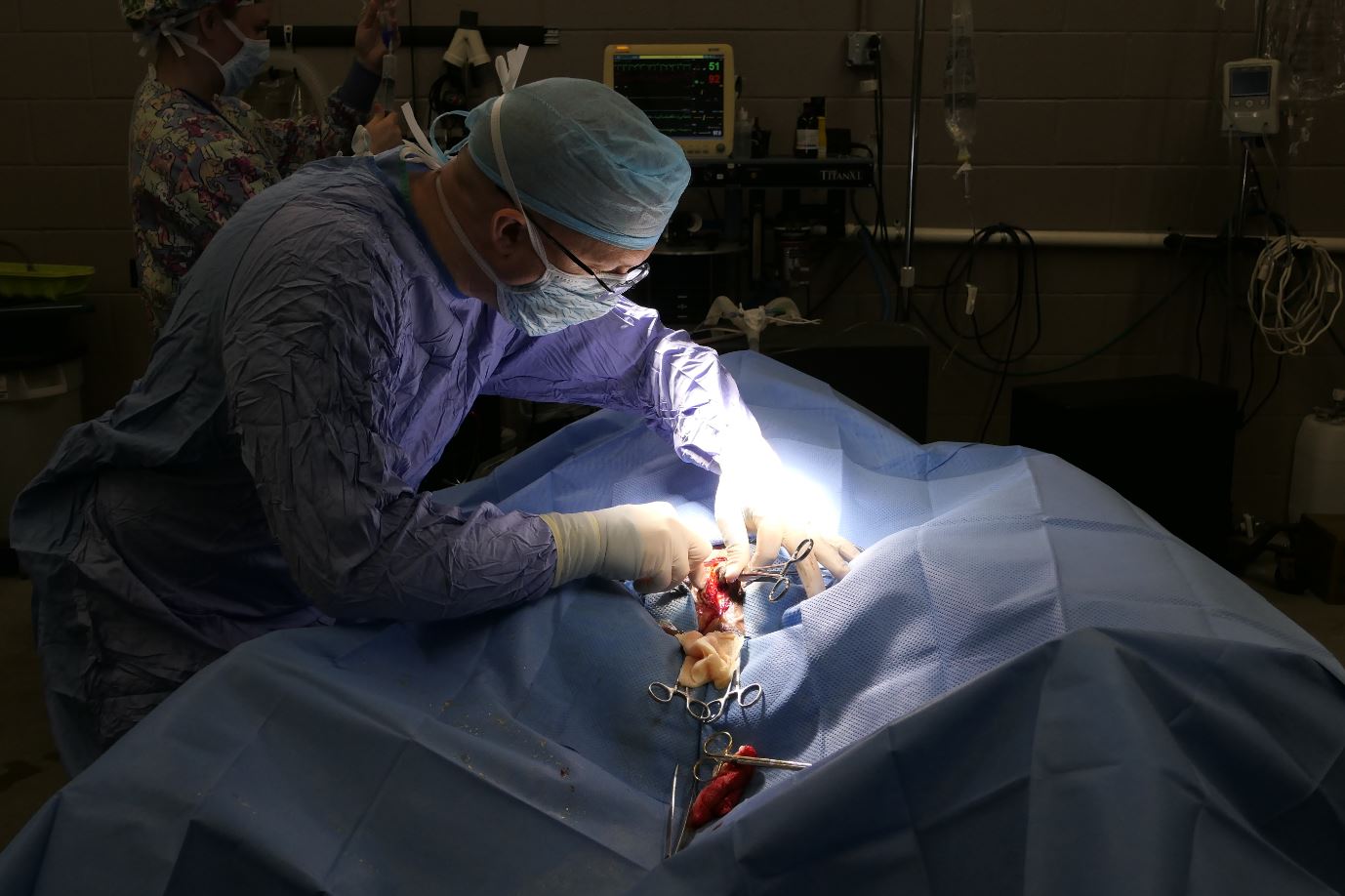
The next morning she was placed under general anesthesia to repair her ruptured bladder wall. Her abdomen was prepped in a sterile manner and upon evaluation of her bladder it was found that the tear in her bladder was throughout her whole bladder. Suction was used to removed the pooled urine from the abdomen during surgery. The bladder was sutured and the abdomen and bladder were constantly flushed to keep the organs moist. Anesthetic recovery was smooth and uneventful. Post surgery a urinary catheter was placed to maintain an empty bladder for 4 days after surgery as well as a belly bandage over the surgical site.
Check out the video from surgery here!
